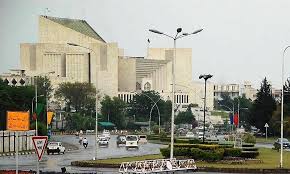The Constitutional Earthquake No One Saw Coming
Behind the carved oak doors of the Ninth Circuit Court of Appeals, a legal drama with seismic consequences is unfolding—one that could redraw the limits of presidential power inside the United States.
What began as a fight over troop deployments in Los Angeles has mutated into a constitutional battle that now threatens to redefine the balance between executive authority, state sovereignty, and judicial oversight.
The flashpoint: President Trump’s decision to deploy National Guard units and federal troops amid waves of protest and unrest in Los Angeles. What some viewed as a necessary act of public protection, others saw as a direct assault on the centuries-old principle that the military should remain outside the realm of civilian law enforcement.

Now, with each new ruling and appeal, the nation finds itself inching closer to an unprecedented question: How far can a president go in wielding soldiers as instruments of domestic control—and what happens if that power is abused?
A Case That Began in the Streets
The controversy was born not in Washington, but on the sidewalks of Los Angeles, where protests tied to immigration policy escalated into nights of fire, broken glass, and tense standoffs. In response, the administration deployed thousands of troops—Guard members and even Marines—to “restore order.”
By late summer, the deployment had scaled down to about 300 Guard members, yet their continued presence raised alarms. California officials warned that their mission no longer matched the level of threat. To Governor Gavin Newsom and Attorney General Rob Bonta, this was less about security and more about federal intrusion into state affairs.
When their objections landed in federal court, Judge Charles Breyer delivered a ruling that jolted the administration: the Guard could stay, but their policing powers would be stripped. Arrests, crowd dispersal, and patrols were out. Guard members would be relegated to protective duties only—standing watch at federal buildings.
For a brief moment, it seemed the firewall of the Posse Comitatus Act of 1878—the law barring the military from domestic policing—was holding firm.
The Appeal That Changed Everything
But on September 21, the Ninth Circuit intervened.
In less than 100 words, a three-judge panel—two Trump appointees and one Biden appointee—temporarily froze Breyer’s restrictions. The judges insisted their order was “strictly procedural,” yet its impact was immediate: the administration regained freedom to direct the Guard as it saw fit, at least until the case proceeds further.
For critics, the brevity of the ruling only underscored the fragility of the legal line separating civilian and military authority. For supporters, it was a recognition that the Commander in Chief must not be hamstrung by courts in moments of crisis.
The tension is stark: on one side, fears of creeping militarization of American life; on the other, an insistence that only strong executive authority can maintain stability during unrest.
The Posse Comitatus Act: A 19th-Century Law in a 21st-Century Storm
At the center of the dispute lies the Posse Comitatus Act, drafted in 1878 as Reconstruction ended. Born of bitter memories of Union troops enforcing order in the post–Civil War South, the Act enshrined a principle: no president could easily turn the military into a domestic police force.
Yet the law contains gray zones. Once National Guard troops are “federalized,” their role shifts from state-controlled militia to instruments of the president’s will. What those troops can legally do—and who, if anyone, can stop them—remains an unsettled question.
Los Angeles has now become the testing ground.
The Broader War Over Presidential Power
The Los Angeles case is not isolated. Similar lawsuits are simmering in Washington, D.C., and other major cities where Trump threatened to send troops. Collectively, these cases are assembling into a larger constitutional showdown, one that many legal scholars believe is destined for the Supreme Court.
At its heart lies a simple but explosive question: Should courts second-guess the president’s military decisions on U.S. soil, or should the Commander in Chief’s judgment remain largely unchecked?
The administration argues the latter. Judge Breyer—and California’s leaders—say the former. The Ninth Circuit’s pause suggests a judiciary reluctant to move too quickly, but unwilling to dismiss the gravity of the issue.
Politics in the Shadows
Beyond law, politics saturates every layer of the case. To the Trump administration, military deployments bolster an image of strength against lawlessness and immigration unrest—messaging that resonates with its base. To Democrats, they are symbols of federal overreach and dangerous precedent-setting, a creeping militarization of American streets.
As the 2026 midterms loom, both sides see more than just troops in Los Angeles. They see an issue that could define not just campaigns, but the future of executive power itself.
Conclusion: America at a Crossroads
The dispute over Los Angeles is no longer about a few hundred Guard members patrolling a restless city. It is about whether the United States will preserve a system in which military force is strictly bounded by law—or whether presidents, present and future, will gain broader, less constrained authority to wield soldiers at home.
This case represents more than a clash between one president and one state. It is a struggle over the meaning of American democracy, where liberty and security constantly pull against each other.
The decisions made in the coming months will echo far beyond Los Angeles, setting precedents that will shape how America responds to future crises, protests, and political storms.
The nation stands at a constitutional crossroads. One direction leads toward concentrated executive power in the name of order. The other reaffirms the fragile but vital limits that have kept military force from dominating civilian life.
Whichever path is chosen, one truth remains: the ground beneath America’s democracy is shifting—and the aftershocks will be felt for generations.
